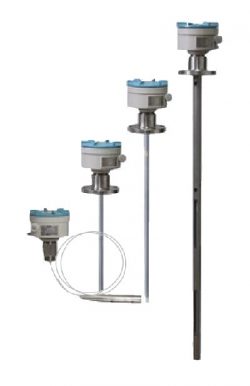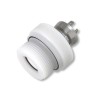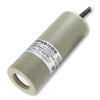 Capacitance method for measuring the level of a fluid.
Capacitance method for measuring the level of a fluid.
Capacitive fluid level sensors are measurement devices which typically consist of a single probe which acts as an immersed electrode inside a tank. This probe interacts with an opposite electrode, usually the wall of a tank, and the two are connected together to form a capacitor.
The fluid contents of the tank act as the dielectric medium, which will affect the capacitance created between the two electrodes. If the fluid level rises and falls, this will change the capacitance measured by the probe in a predictable way, and therefore it can be used very effectively as a measurement of fluid level.
Glossary of Liquid Level technical terms
- cmH2O – Centimetres of Water Column at 4 deg C Pressure Unit
- Conductive Fluid Level Detection
- Float Fluid Level Detection
- ftH2O – Feet of Water Column at 4 deg C Pressure Unit
- mH2O – Metres of Water Gauge at 4 deg C Pressure Unit
- mmH2O – Millimetres of Water Column at 4 deg C Pressure Unit
- Specific Gravity
- Vibrating Tuning Fork Fluid Level Detection
Help from Liquid Level resources
- Difference between vented and non-vented water level measurement
- Measuring liquid level in a tank using a dp sensor
- Determining water tank volume using hydrostatic pressure
- Measuring the volume of liquid in a horizontal cylinder tank
- How do you measure the volume of a liquid using pressure
- Calculating required pressure range for fuel tank level measurement



